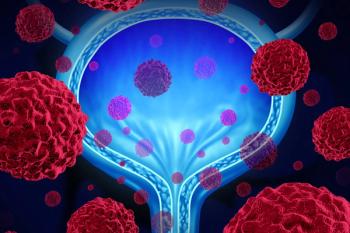
Oncology NEWS International
- Oncology NEWS International Vol 8 No 2
- Volume 8
- Issue 2
Exploring Late Effects of Transplantation: Osteoporosis, Therapy-Related Leukemia
MIAMI BEACH-As more cancer patients undergo allogeneic and autologous peripheral blood stem cell (PBSC) and bone marrow transplants, more long-term complications crop up. Two papers presented at the ASH meeting addressed the late effects of reduced bone density and development of therapy-related leukemia.
MIAMI BEACHAs more cancer patients undergo allogeneic and autologous peripheral blood stem cell (PBSC) and bone marrow transplants, more long-term complications crop up. Two papers presented at the ASH meeting addressed the late effects of reduced bone density and development of therapy-related leukemia.
Bone density loss after solid tumor organ transplant has been documented, and is commonly related to pretransplant health status, organ dysfunction, and post-transplant immunosuppressive therapy. Likewise, cancer patients receiving PBSC or bone marrow transplants may face similar bone thinning.
Keith M. Sullivan, MD, and colleagues at the Fred Hutchinson Cancer Research Center and the University of Washington, Seattle, examined the incidence, severity, and onset of bone density abnormalities during the first year after allogeneic PBSC transplant.
Their longitudinal study measured bone density by dual energy x-ray absorptiometry (DEXA) at 3 and 12 months after transplant to determine the tempo and degree of bone density loss and its associated risk factors.
We know very little about bone loss following stem cell transplant, Dr. Sullivan commented, and, with young adults, this will be an issue for their long-term survival.
Dr. Sullivan reported results on 104 adults (52 women and 52 men), ranging in age from 18 to 66, without prior bone disease. DEXA scans of the hip at 3 months showed that 44% of the patients already had low bone density scores, and 4% of the patients had developed osteoporosis. In 35% of patients, the researchers observed low spine density (osteopenia); in 8% of patients they observed osteoporosis of the spine. We found that the older the patient, the higher the risk for osteopenia, Dr. Sullivan said. There appeared to be no gender effect and no effect from use of total body irradiation.
Also highly significant was cumulative prednisone use. Significant associations between chronic graft-versus-host disease and change in hip and spine density were presumably due to prednisone therapy, he said.
We dont yet know the most effective type and duration of routine preventive therapy, Dr. Sullivan said, but because osteopenia is so common after stem cell allografting, it is essential to prevent osteoporosis early after transplant. Future studies should carefully examine the value of interventions to minimize the risk of bone disease and later morbid-ity in these patients.
Therapy-Related Leukemia
At the City of Hope National Medical Center, Duarte, Calif, A. Krishnan, MD, and colleagues focused on the risk factors for developing therapy-related leukemia (myelodysplasia or AML) after autologous transplantation for lymphoma.
Its not clear whether this well-known complication of therapy for Hodgkins disease and non-Hodgkins lymphoma represents the effects of pretransplant treatment, or results from transplant conditioning and/or stem cell priming, Dr. Krishnan said.
City of Hope researchers followed 612 patients (median age, 39) undergoing autologous transplants for lymphoma. Twenty-two patients developed morphologic evidence of therapy-related leukemia post-transplant.
Compared with a control group matched for disease and length of follow-up, there were no significant links between the development of leukemia and age at transplant, exposure to pretransplant alkylating agents, prior local radiation, or transplant conditioning regimens.
However, Dr. Krishnan said, stem cell priming with high-dose etoposide was independently associated with increased risk of leukemia with genetic abnormalities (11q23/21q22).
In the cohort study, patients who received PBSCs were more likely to develop myelodysplasia or AML than patients who received bone marrow alone or bone marrow and peripheral blood stem cells.
We need prospective studies with more sensitive biomarkers from the time of diagnosis in order to determine the sequence of events that ultimately leads to therapy-related leukemia, Dr. Krishnan concluded.
Articles in this issue
almost 27 years ago
Paclitaxel Plus Mitoxantrone for Poor-Prognosis Breast Canceralmost 27 years ago
Faslodex, Pure Antiestrogen, Studied in Tamoxifen-Resistant Breast Canceralmost 27 years ago
LHRH Agonist Plus Tamoxifen Improves Outcome in Young Metastatic Patientsalmost 27 years ago
Pros and Cons of Different Approaches to Chemoradiationalmost 27 years ago
Less Cardiotoxicity With Liposomal Doxorubicinalmost 27 years ago
Optimizing Docetaxel Tolerability in Anthracycline-Resistant Breast Canceralmost 27 years ago
Doxorubicin Appears to Change Natural History of HER-2+ Cancer’salmost 27 years ago
Tamoxifen After Surgery/RT Decreases Local Recurrence Risk in DCIS PatientsNewsletter
Stay up to date on recent advances in the multidisciplinary approach to cancer.


















































































